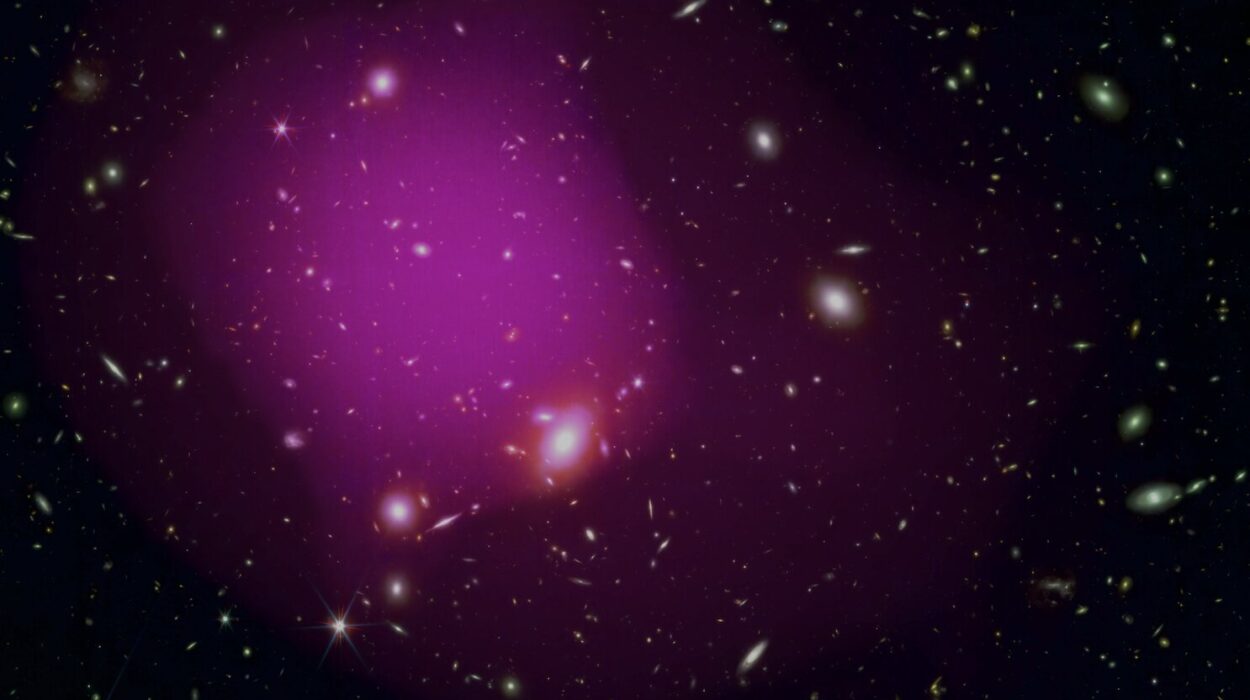In the vast black canvas of the universe, stars burn, galaxies collide, and exotic objects like neutron stars and black holes reshape the fabric of space and time. But for many astrophysicists, the real treasures lie in something far smaller: photons—the fundamental particles of light. Every photon carries a story. Its energy, frequency, and origin can whisper secrets about cataclysmic cosmic events, invisible companions, or even entirely new classes of astronomical objects.
Among this cosmic detective work, tracking the origins of certain photons has emerged as one of the most intriguing methods to probe the unknown. And lately, an enigmatic class of gamma-ray photons—specifically those carrying 511 kiloelectronvolts (keV) of energy—has taken center stage. These high-energy messengers may soon become keys to unlocking a slew of long-standing astrophysical mysteries, from hidden exoplanets and unseen pulsars to the nature of exotic binary star systems.
The Power of a 511 keV Photon
Before diving into the discoveries, it helps to understand what makes a 511 keV photon so special. This precise energy corresponds to the annihilation of an electron and a positron, its antimatter counterpart. When these two particles meet, they destroy each other and emit two photons, each with exactly 511 keV of energy, flying off in opposite directions.
This isn’t just textbook particle physics—it’s a cosmic signature. When astronomers detect a spike in photons with this energy, they know somewhere out there, antimatter and matter are meeting and vanishing. And in the hostile, high-energy environments surrounding neutron stars—especially millisecond pulsars (MSPs)—these kinds of interactions are not just possible, but likely.
MSPs are neutron stars that rotate hundreds of times per second, whipping around with mind-bending speed and magnetic fury. Their rapid spins generate beams of radiation, often likened to lighthouses in space. When paired in a binary system with a companion star, the interactions between the pulsar beam and the companion’s atmosphere can produce large volumes of 511 keV photons through electron-positron annihilation.
Now, imagine tracking these photons not just as a curiosity, but as a cosmic trail of breadcrumbs—a way to infer the orbital dance of stars, the composition of alien worlds, or even spot pulsars whose beams never grace Earth’s detectors directly. This is exactly the vision of a growing cadre of astrophysicists.
A New Lens on Hidden Worlds
One of the more tantalizing suggestions emerging from recent theoretical studies is that the flux and spectral shifts of 511 keV photons could serve as a kind of astrophysical stethoscope, letting us “listen in” on the dynamics of exotic binary systems. These systems often feature a rapidly spinning pulsar and a smaller companion star—or possibly even a hidden exoplanet.
As these bodies orbit each other, their motion causes redshifts and blueshifts in the photon signals—tiny changes in energy caused by the Doppler effect. If an exoplanet is tugging on the binary system, its presence could subtly shift the timing and intensity of the 511 keV photons emitted. In this way, photon analysis becomes more than just a tool for confirming known objects; it could become a method for discovering previously invisible ones, tucked away in systems too extreme for traditional optical or radio surveys.
Further, the nature of the companion star itself influences the production of these photons. Stars made of heavier elements or more diffuse atmospheres will interact with the pulsar’s beam differently than those made of hydrogen or helium. By examining the “production efficiency”—the rate and consistency of 511 keV photon generation—astronomers could infer the chemical composition of the companion star, giving us a window into its structure and lifecycle.
Ultra-Compact Systems: A Blind Spot with a Bright Signal
One of the more surprising revelations is that ultra-compact MSP binary systems—where a pulsar and its companion are crammed into an extremely tight orbital embrace—have largely escaped detection. These systems are so tightly bound that existing survey algorithms often dismiss them. Their signals are hard to disentangle from noise, and the orbital interactions between the pulsar and its companion distort the pulses in ways that confuse current detection software.
But ironically, these overlooked systems might be the brightest sources of 511 keV photons in the galaxy.
In such close configurations, the pulsar’s beam passes repeatedly through large portions of the companion’s outer atmosphere. This creates more opportunities for electron-positron interactions, and thus more annihilations—producing an enhanced, sustained stream of 511 keV photons. These emissions, unlike the directional pulsar beams, are much more isotropic, meaning they spread out in many directions. Even if the pulsar’s beam misses Earth completely, its photon signature may not.
This opens up the tantalizing possibility of identifying new “dark pulsars”—neutron stars that have never been detected because their beams don’t cross our line of sight. These invisible lighthouses have long been suspected to exist in large numbers, hiding in the shadows simply because we’ve been looking in the wrong way. But now, we might have a way to see them by their shadows—by detecting the photons emitted when their beams graze another star.
A Sideways Glance at Pulsars We Can’t See
To understand why this is such a breakthrough, consider how most pulsars are discovered. The classic detection method relies on the narrow beam of radiation sweeping across Earth like a lighthouse beam hitting an island. If the beam doesn’t happen to align with Earth, we miss it entirely. This means our current pulsar catalog is biased—we’re only seeing the lucky few whose beams intersect our planet.
But what if the pulsar beam strikes a nearby companion star instead? The beam energizes the outer atmosphere, creating a cascade of interactions that culminate in the production of 511 keV photons. These secondary photons don’t follow the narrow path of the original beam; they diffuse outward, meaning we can detect them even if we’re far off the beam’s axis.
This indirect detection method could greatly expand our ability to identify and study neutron stars, especially those in tight binary systems. By mapping the distribution and intensity of 511 keV signals across the sky, astronomers could uncover a hidden population of pulsars—silent to radio telescopes but blazing in the gamma-ray spectrum.
Eyes on the Future: Instruments Ready to Catch the Signal
At this stage, the theory is just that—a theory, albeit one grounded in rigorous modeling and simulations. But the technological landscape is changing fast. Within just a few years, astronomers will have a powerful new tool in orbit: the Compton Spectrometer and Imager (COSI), slated for launch in 2027. This instrument is designed to detect gamma rays with unprecedented sensitivity, resolution, and background noise suppression.
COSI’s mission is perfectly tailored to hunt for the kinds of signals these theories predict. By capturing 511 keV photons and mapping them with high angular precision, it could finally allow astronomers to verify whether ultra-compact binaries are indeed producing enhanced photon fluxes. It could detect exoplanet-induced redshifts in photon output. It could even locate pulsars that have never been seen before, buried in the gamma-ray fog.
And COSI is just the beginning. As gamma-ray astronomy matures, more detectors will come online with even greater precision, bandwidth, and sensitivity. The next decade could transform our view of the high-energy universe in ways no one predicted just a few years ago.
Beyond the Signal: What It All Means
In the end, the story of the 511 keV photon is more than a tale of particle annihilation. It’s a story about how light—when read correctly—can serve as a universal informant. These photons are not just energetic leftovers; they are emissaries from the most extreme environments in the universe.
Their behavior could inform us about the structure of matter, the distribution of antimatter, the formation of neutron stars, and the presence of exoplanets in some of the most inhospitable places imaginable. They could help resolve long-standing debates about how stars die, how binaries evolve, and how many invisible pulsars might be hiding in plain sight.
In a cosmos where most objects are too distant, too dark, or too chaotic to observe directly, photons like these become our translators. Every 511 keV gamma ray that strikes a detector on or near Earth brings with it a sliver of truth from the outer universe. And it’s up to us to piece together the puzzle.
Reference: Zachary Metzler et al, Irradiated Pulsar Planets and Companions as 511 keV Positron Annihilation Line Sources, arXiv (2025). DOI: 10.48550/arxiv.2503.10511





